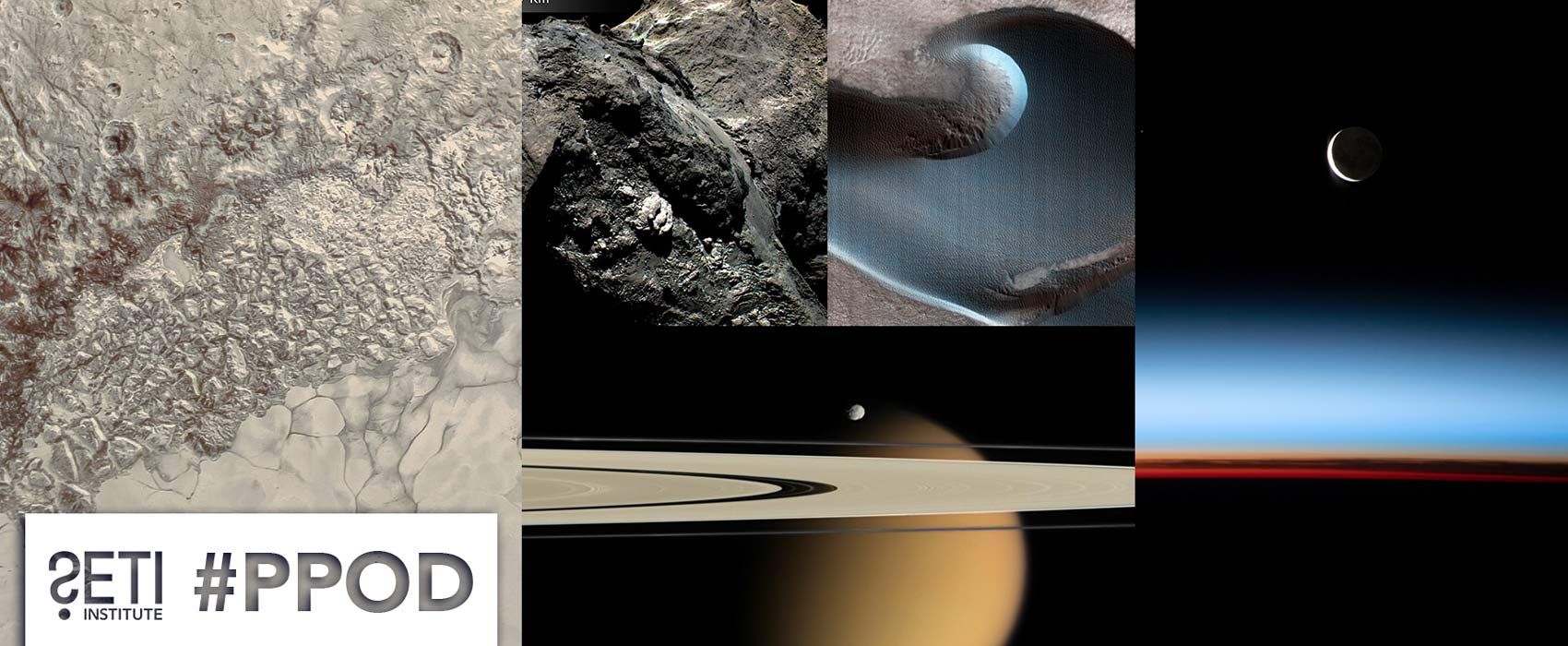
Planetary Picture of the Day
Week of September 12, 2022
The amazing textures of space and an amazing view of Earth's Horizon from the ISS!
Monday, September 12, 2022
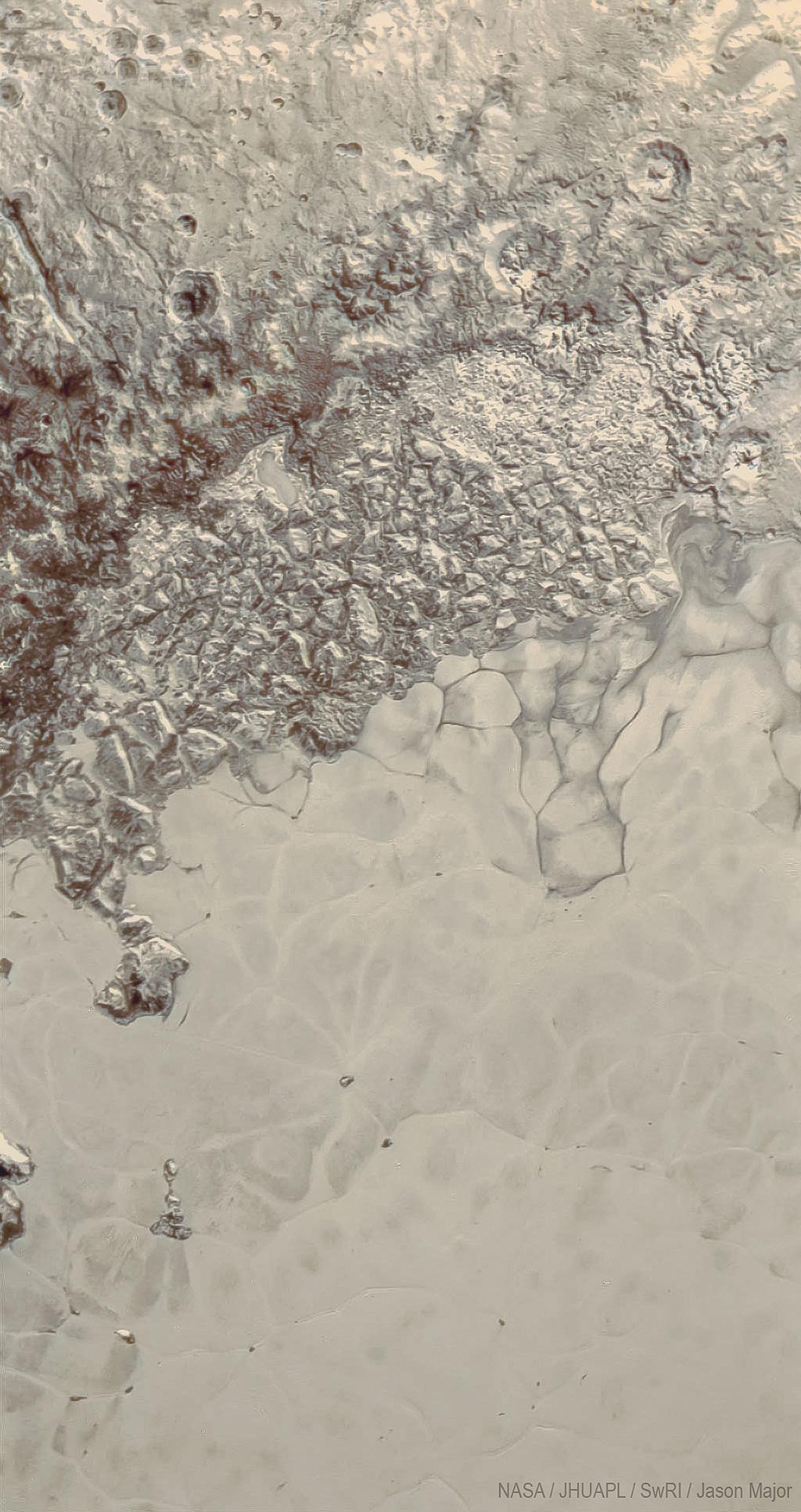
Credit: NASA/Johns Hopkins University Applied Physics Laboratory/Southwest Research Institute
Pluto
The surface of Pluto, imaged by New Horizons from a distance of about 76,800 km during its flyby on July 14, 2015. Approximate natural color.
Tuesday, September 13, 2022
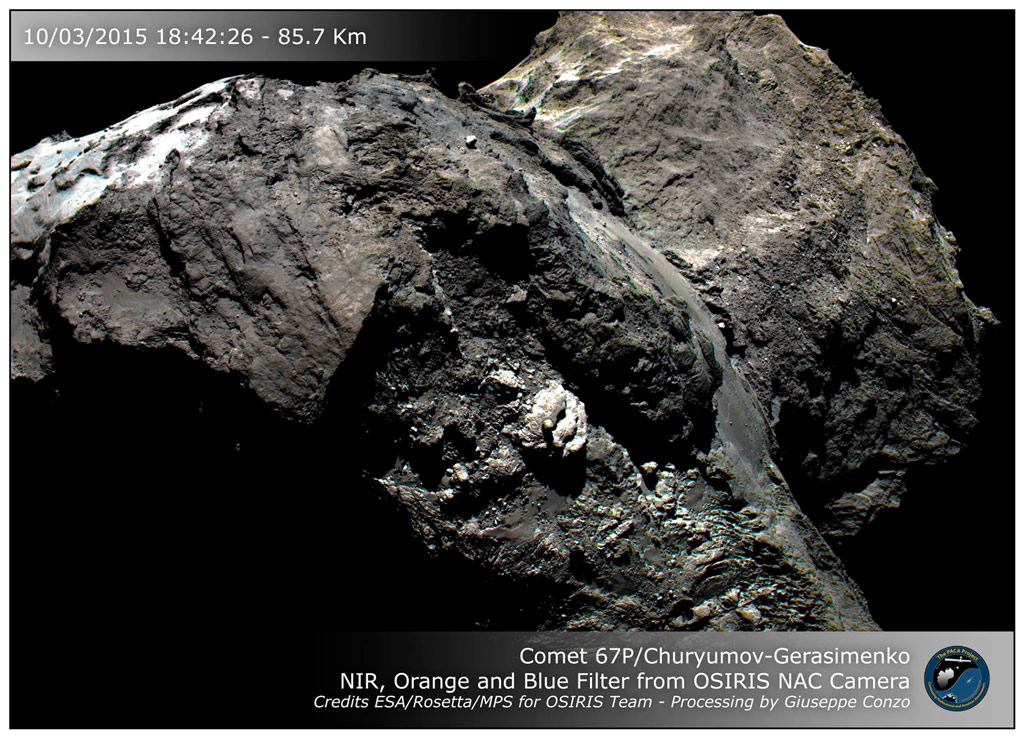
Credit: ESA/Rosetta/MPS for OSIRIS Team/Giuseppe Conzo
Comet 67P
This absolutely stunning color image of comet 67P was taken by ESA Rosetta's OSIRIS camera on March 10, 2015, from a distance of 85.7 kilometers. It is a color composite of three photos taken through infrared, orange, and blue filters. Bright, bluish areas may be exposed ice.
Wednesday, September 14, 2022
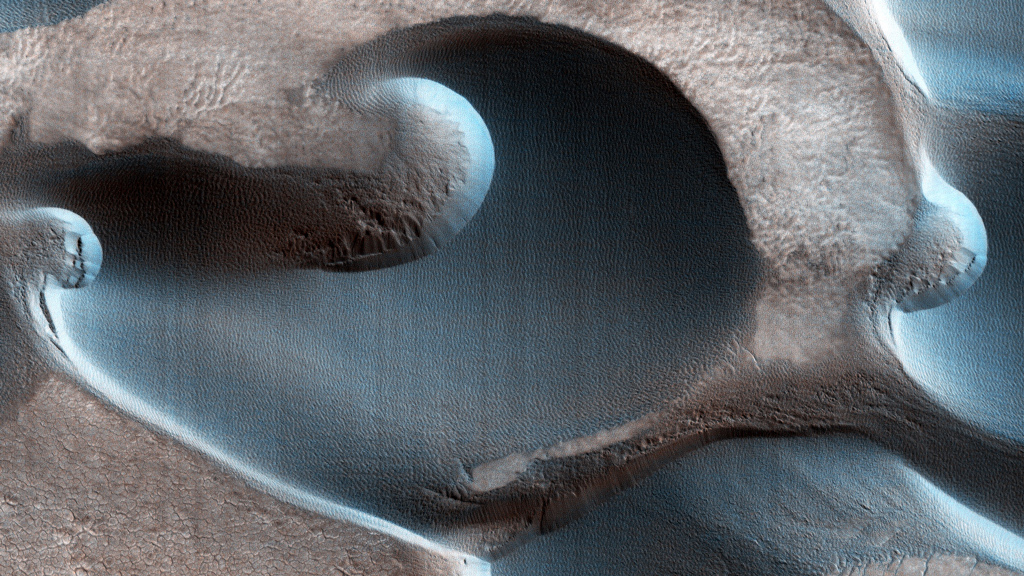
CREDIT: NASA/JPL-Caltech/UArizona
Barchan dunes in the North Pole of Mars
This enhanced color image (using the red-green-blue filter) shows a group of lovely barchan dunes along a scarp (cliff) in Chasma Boreale in the north pole of Mars. The image here shows an area less than 1 kilometer across and MRO was about 197 kilometers above the surface when the image was taken. Usually, these dunes are very distinctive in shape and are important because they can tell scientists about the environment in which they formed and the direction of the winds at a particular location. Barchans form in sandy areas where winds blow in one dominant direction. This creates a crescent-shaped sand dune. The arcs of sand that define the barchan dunes end in 'horns' that point downwind, while sand is blown into crests and slopes.
Thursday, September 15, 2022
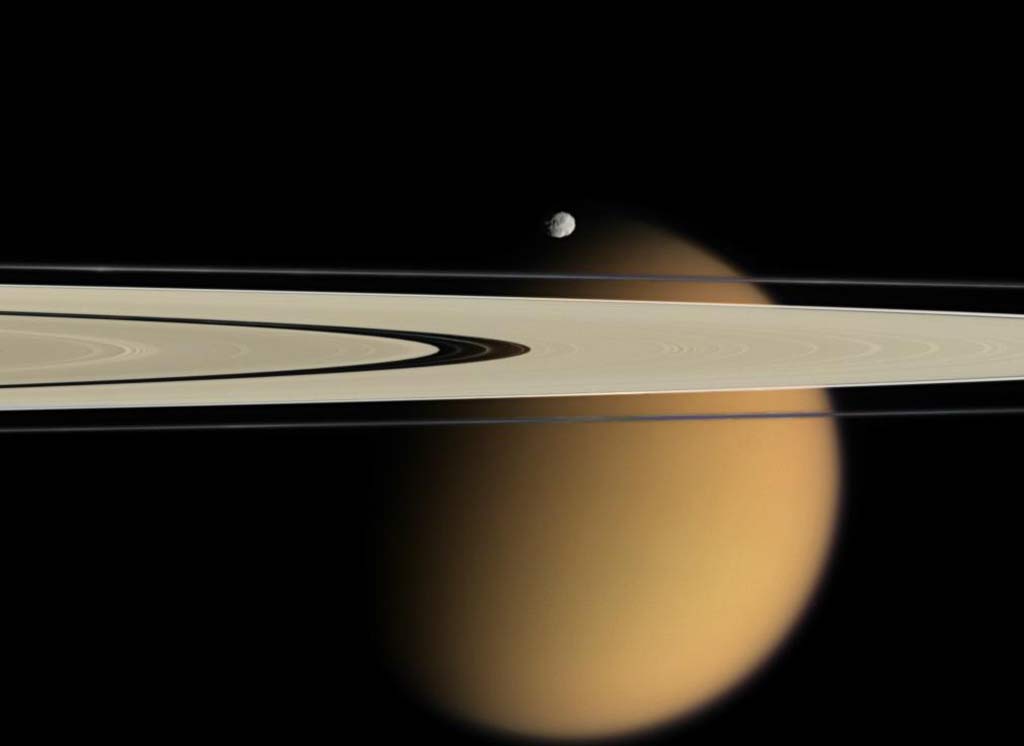
Credit: NASA/JPL/Space Science Institute
Titan Beyond the Rings
NASA's Cassini delivered this stunning vista showing small, battered Epimetheus and smog-enshrouded Titan, with Saturn's A and F rings stretching across the scene. Epimetheus is 116 kilometers (72 miles) across and giant Titan is 5,150 kilometers (3,200 miles) across.
Friday, September 16, 2022
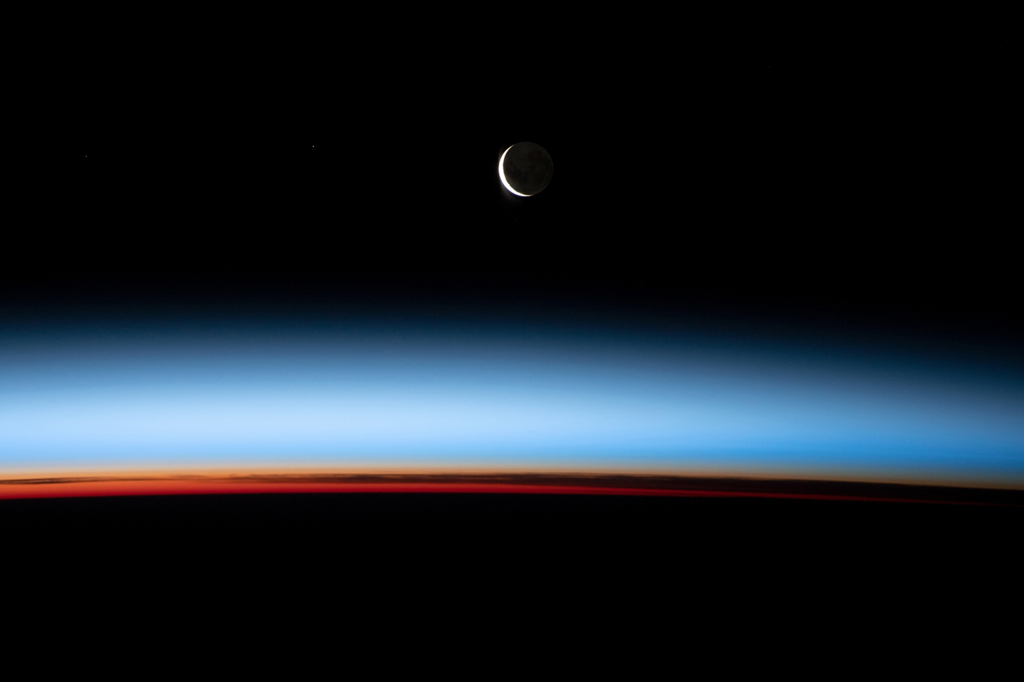
Credit: NASA
Earth’s Limb with a Crescent Moon
An astronaut onboard the International Space Station (ISS) took this photograph of Earth’s horizon—also known as Earth’s limb—and a cross-section of atmospheric layers. With a waxing crescent moon above, the ISS was located over the southwestern Pacific Ocean about 1100 kilometers (700 miles) east of New Zealand.





